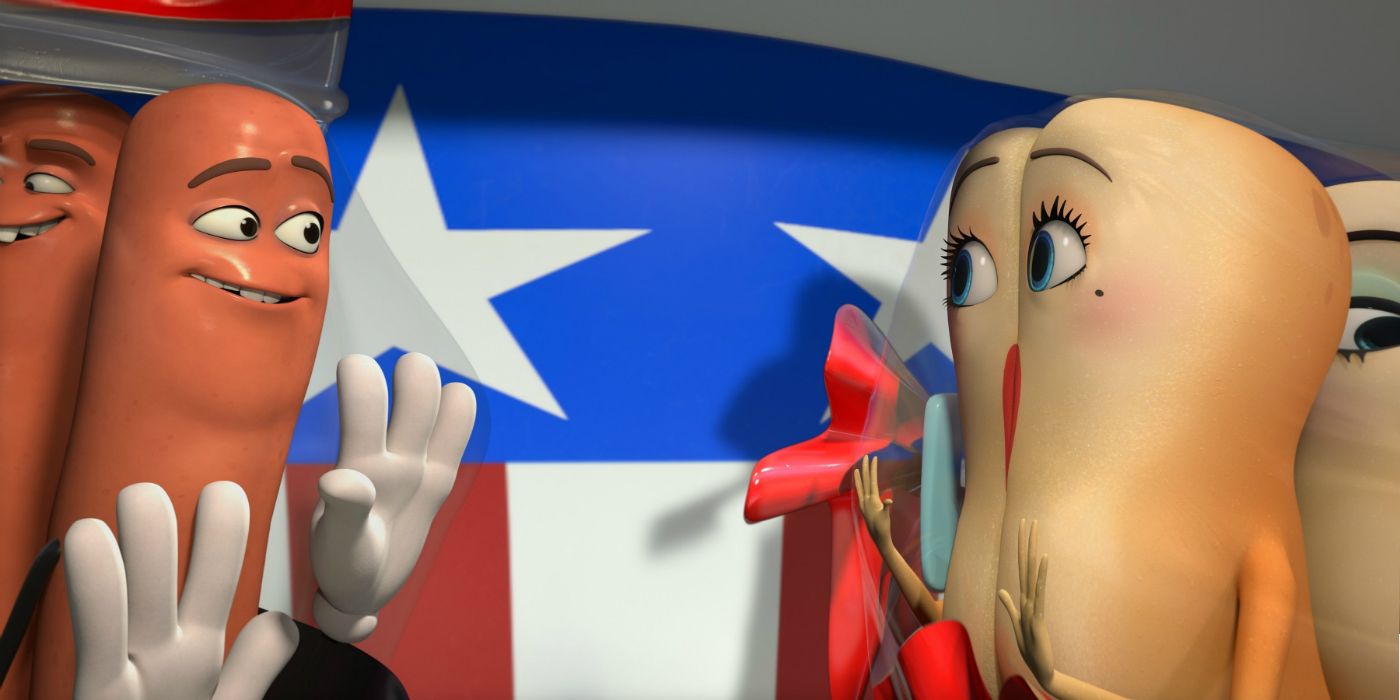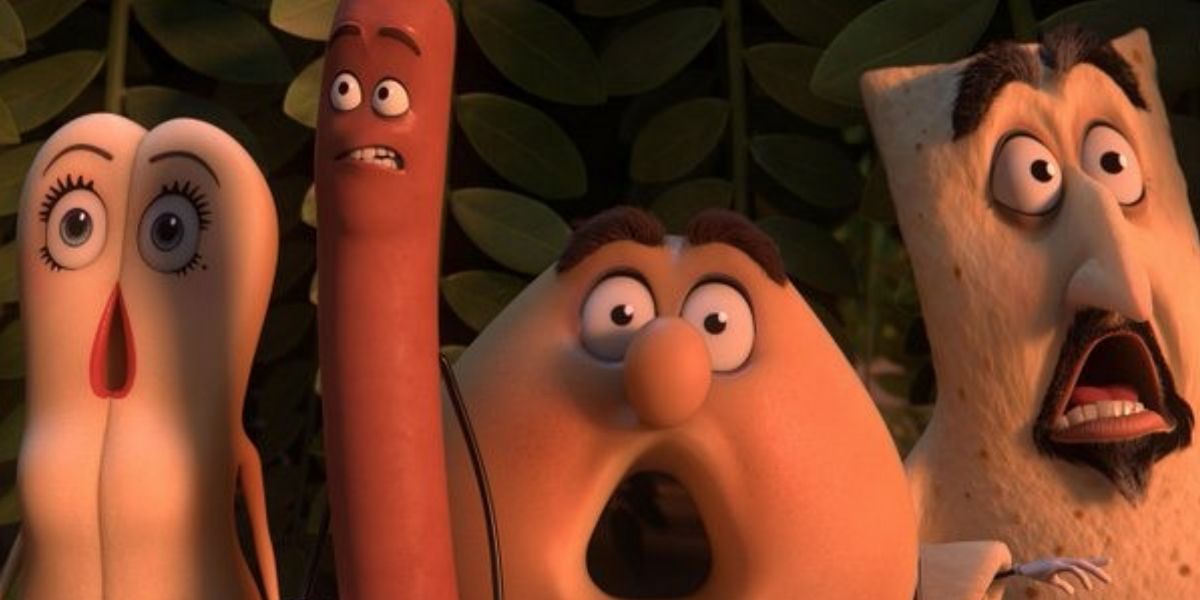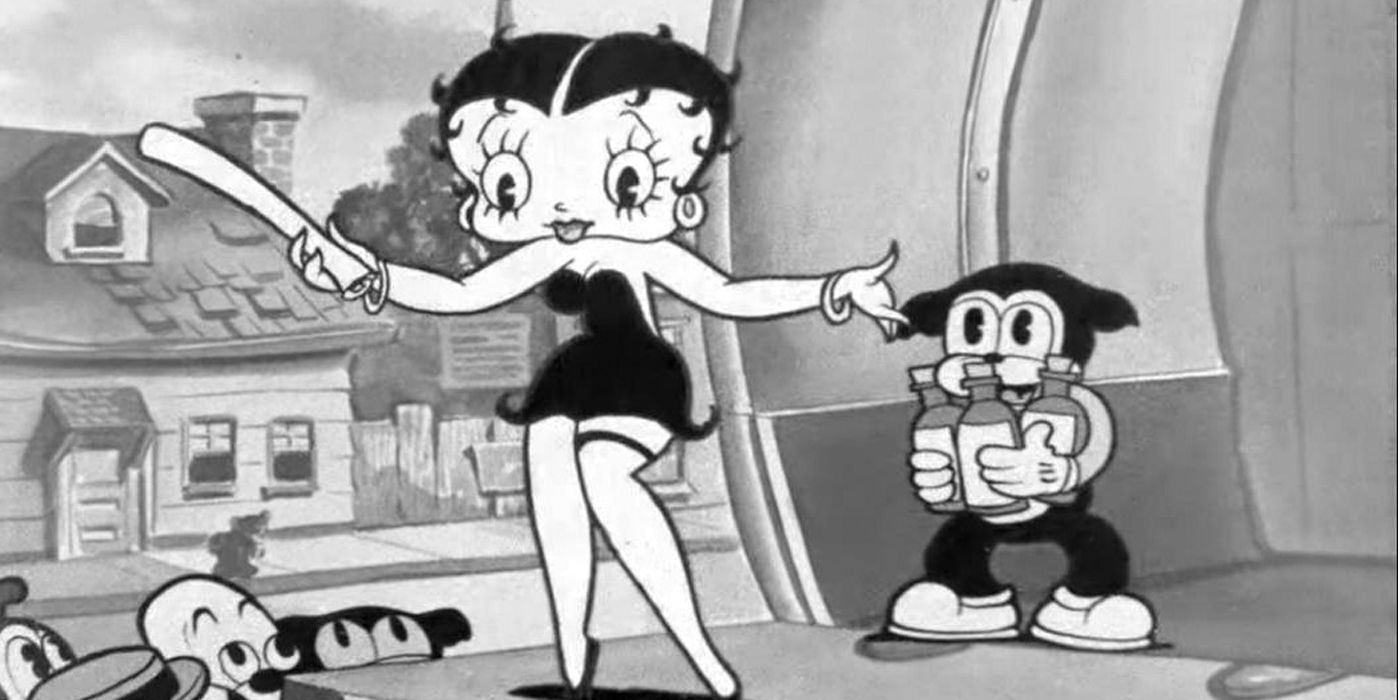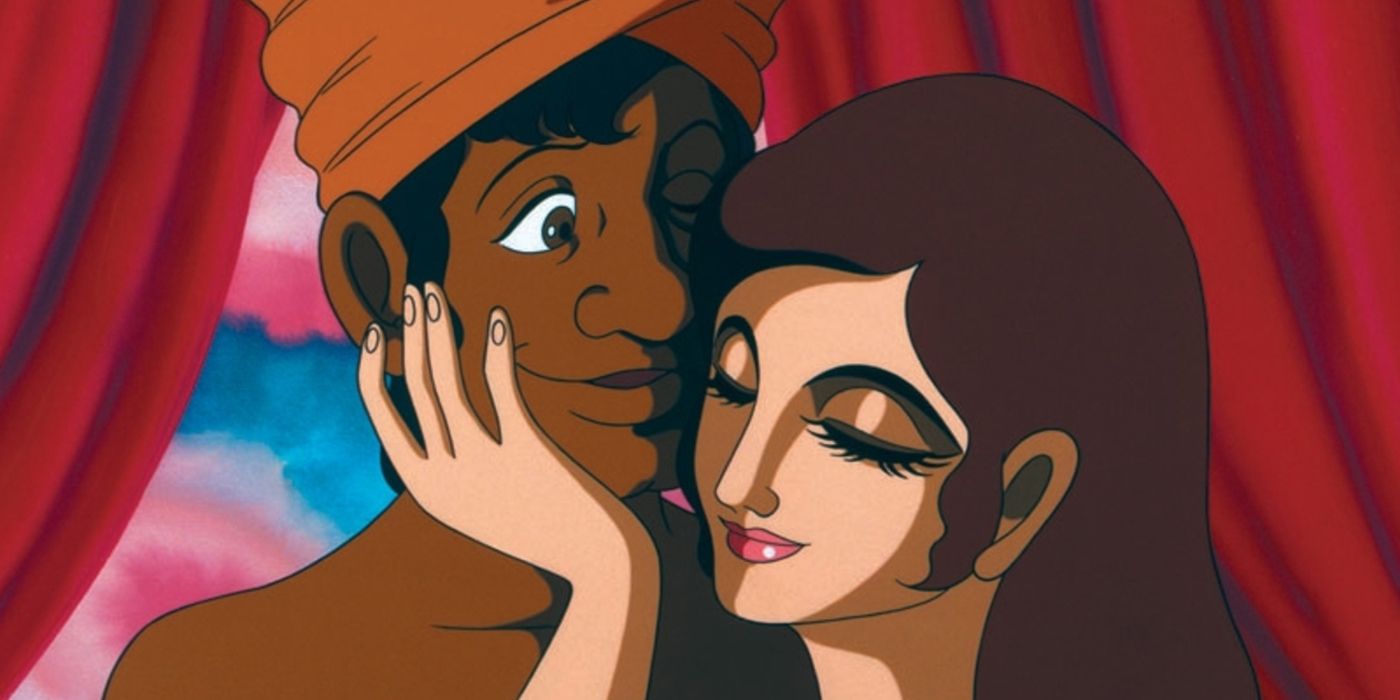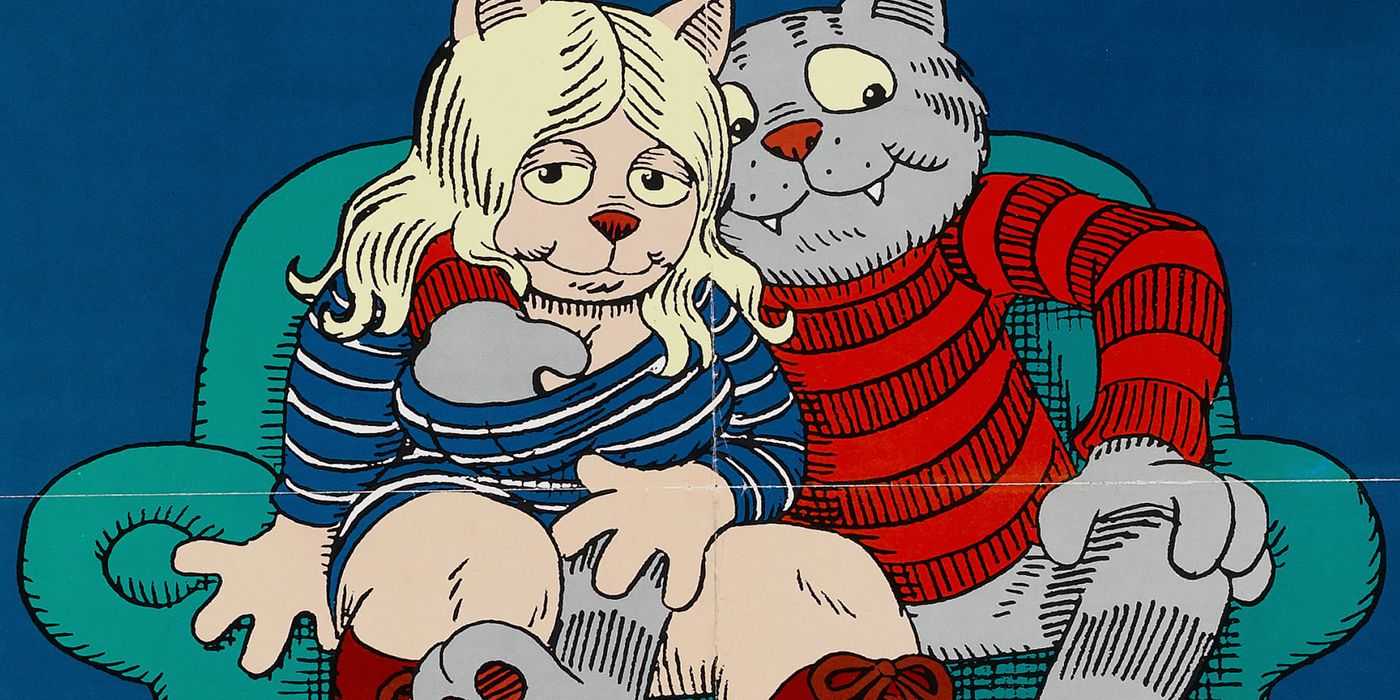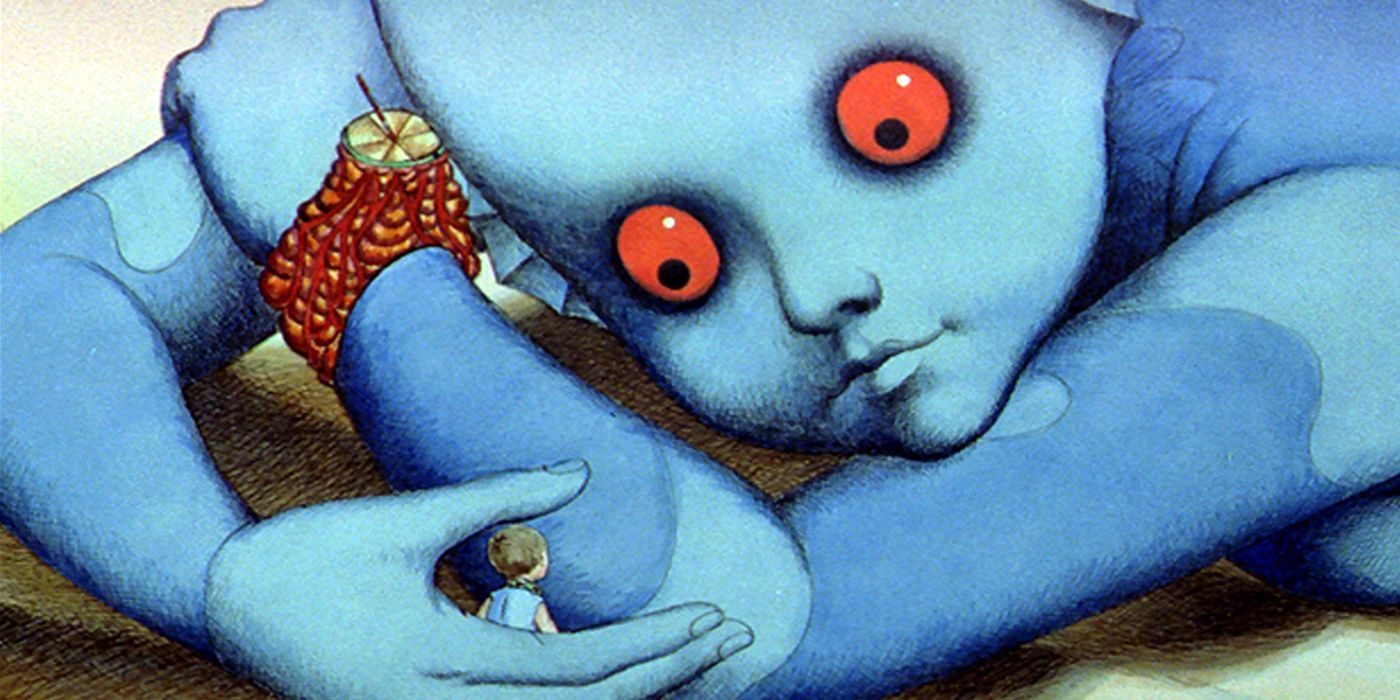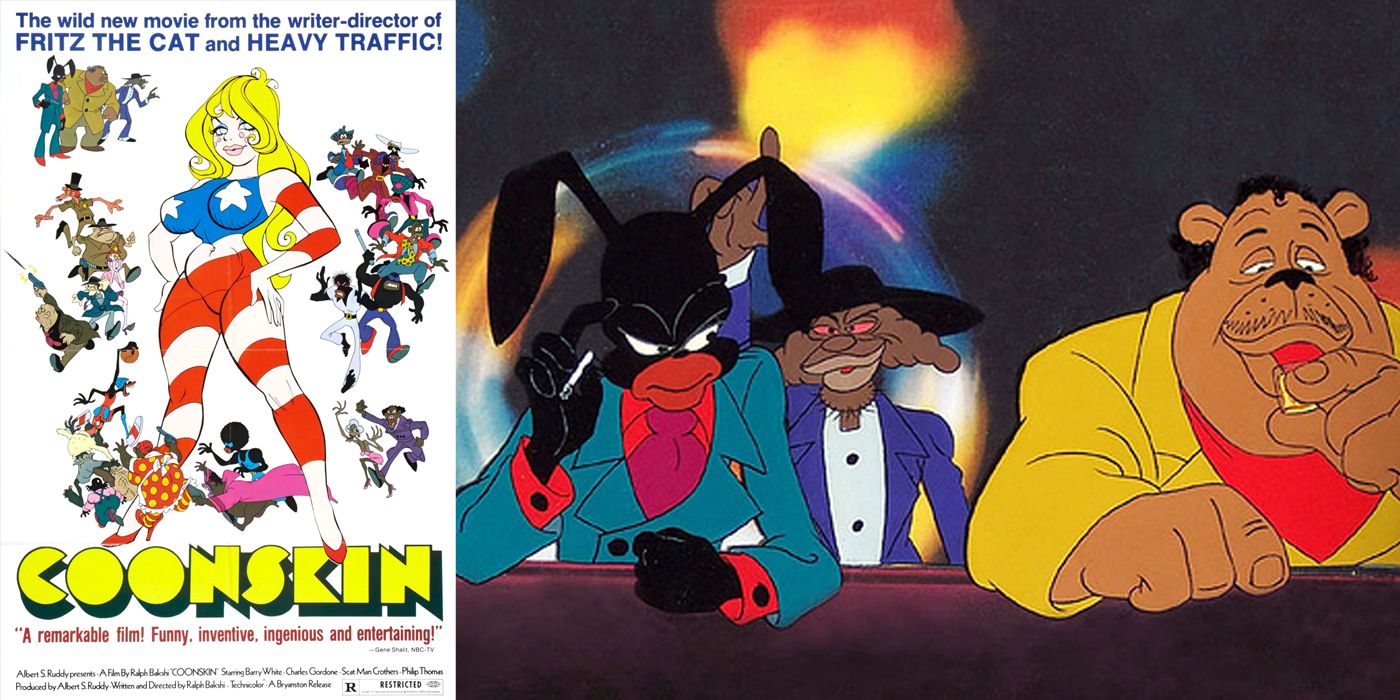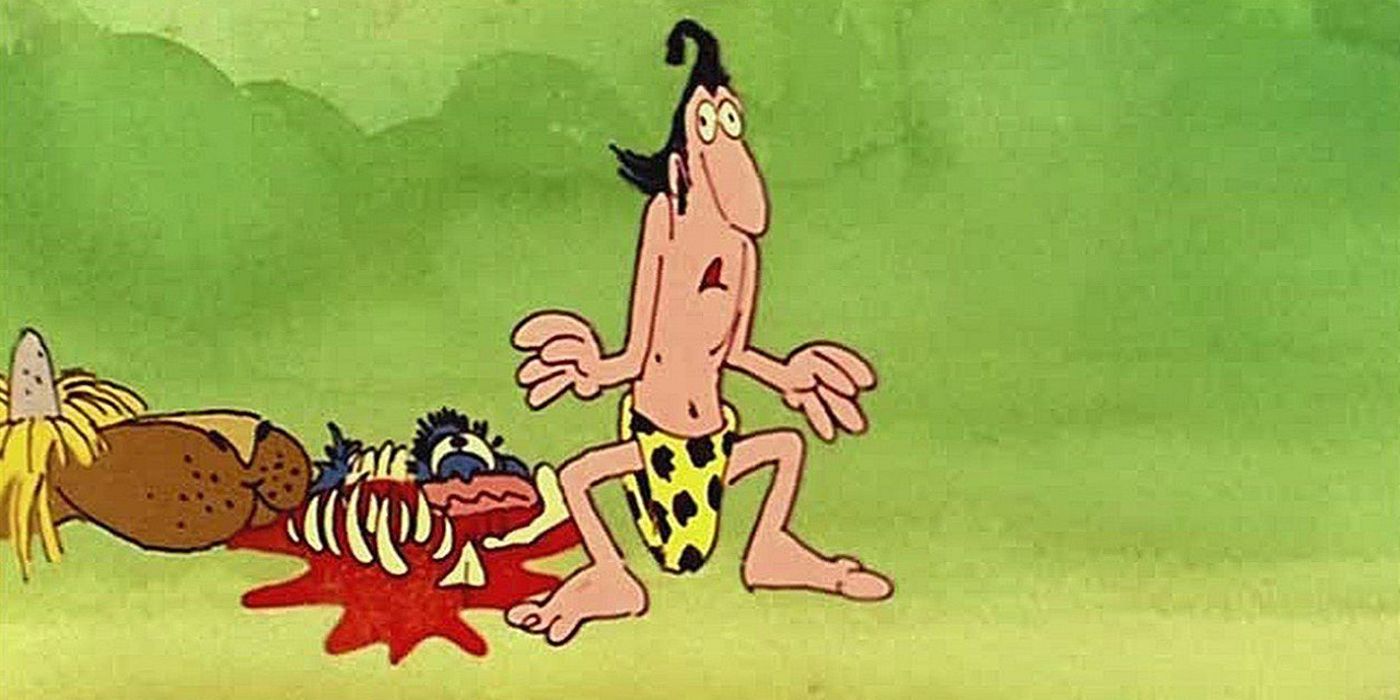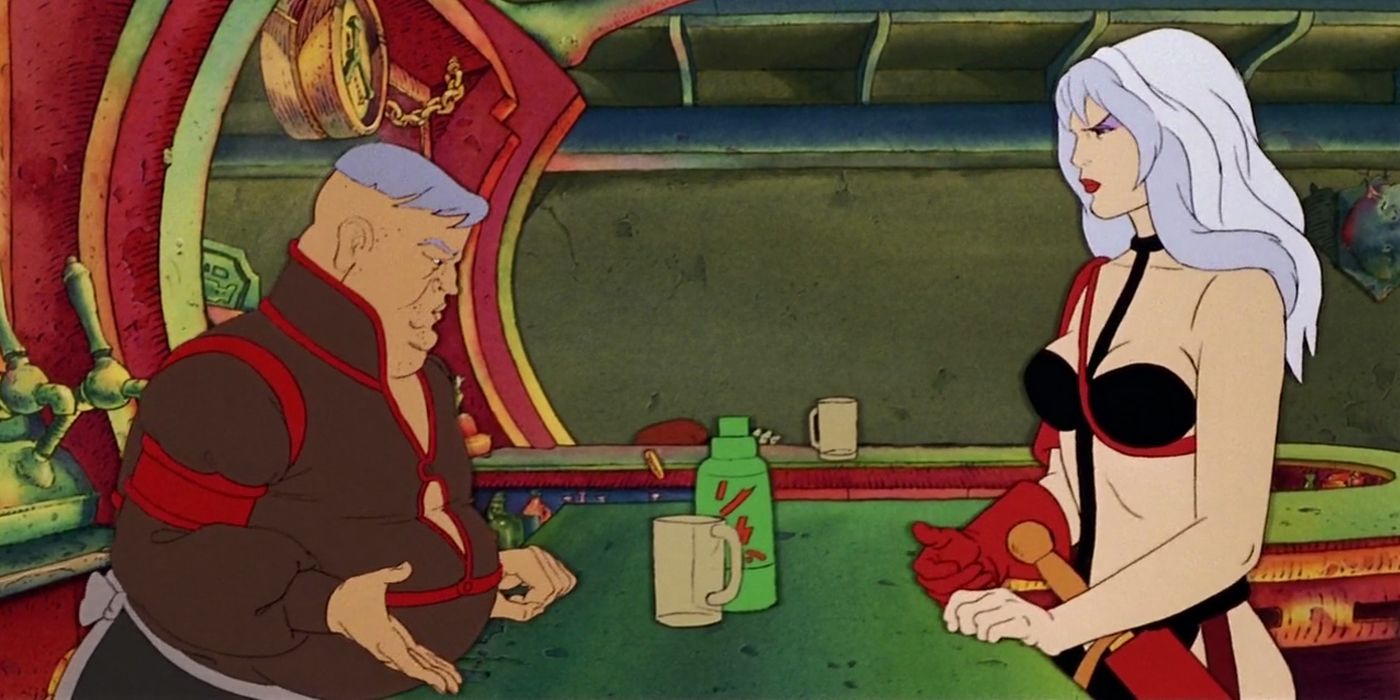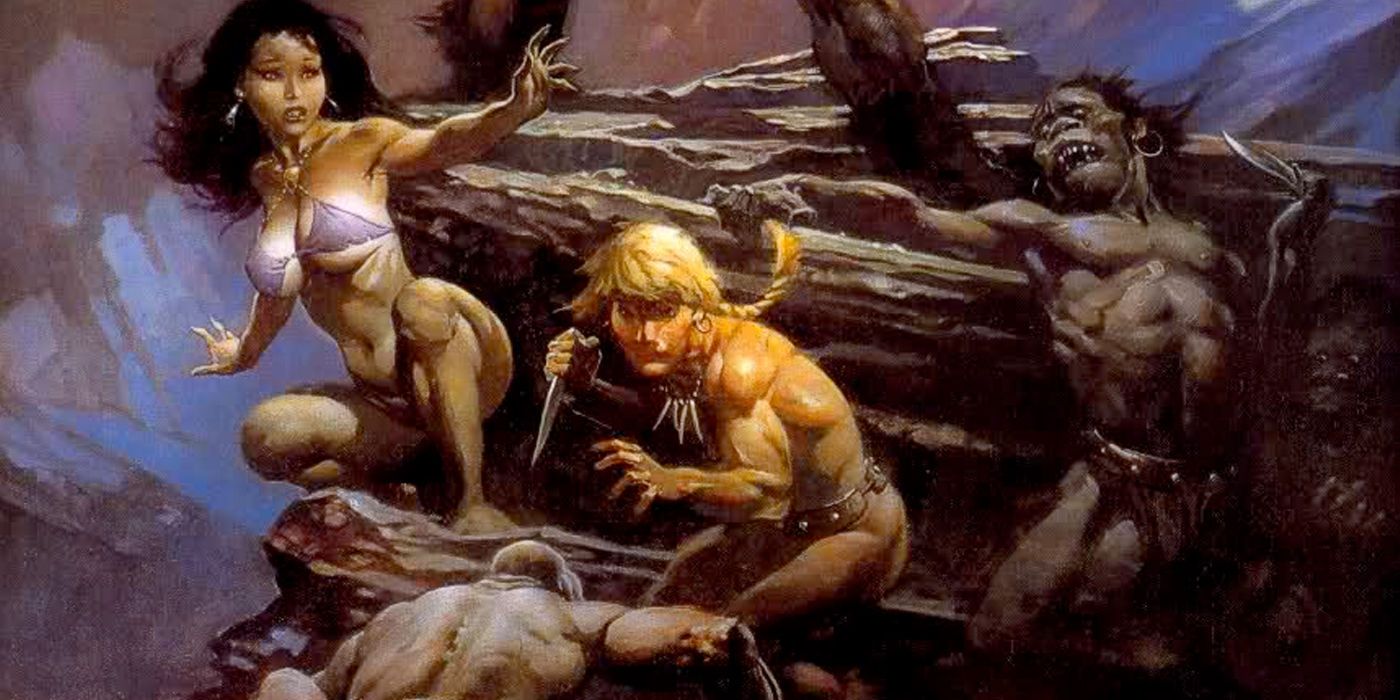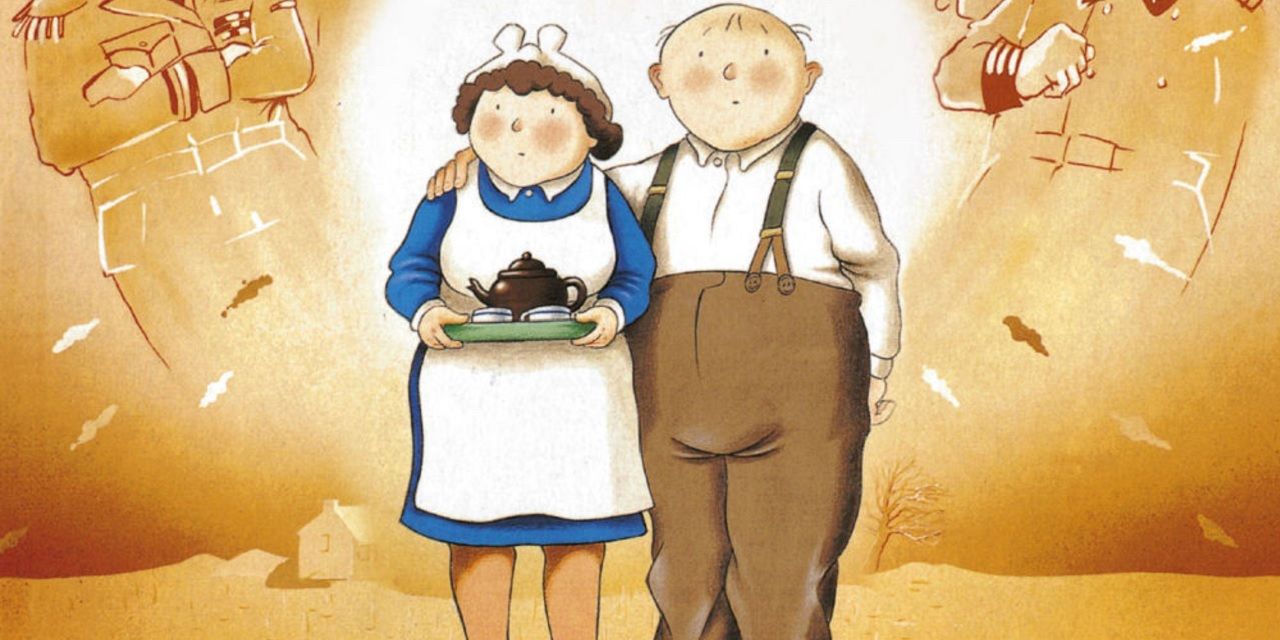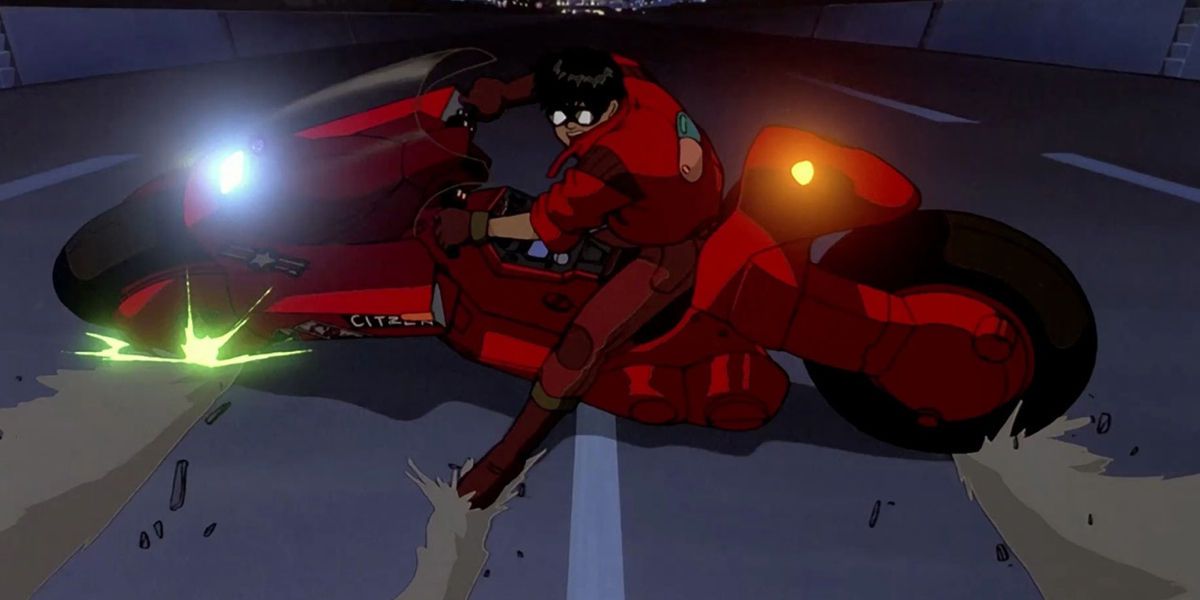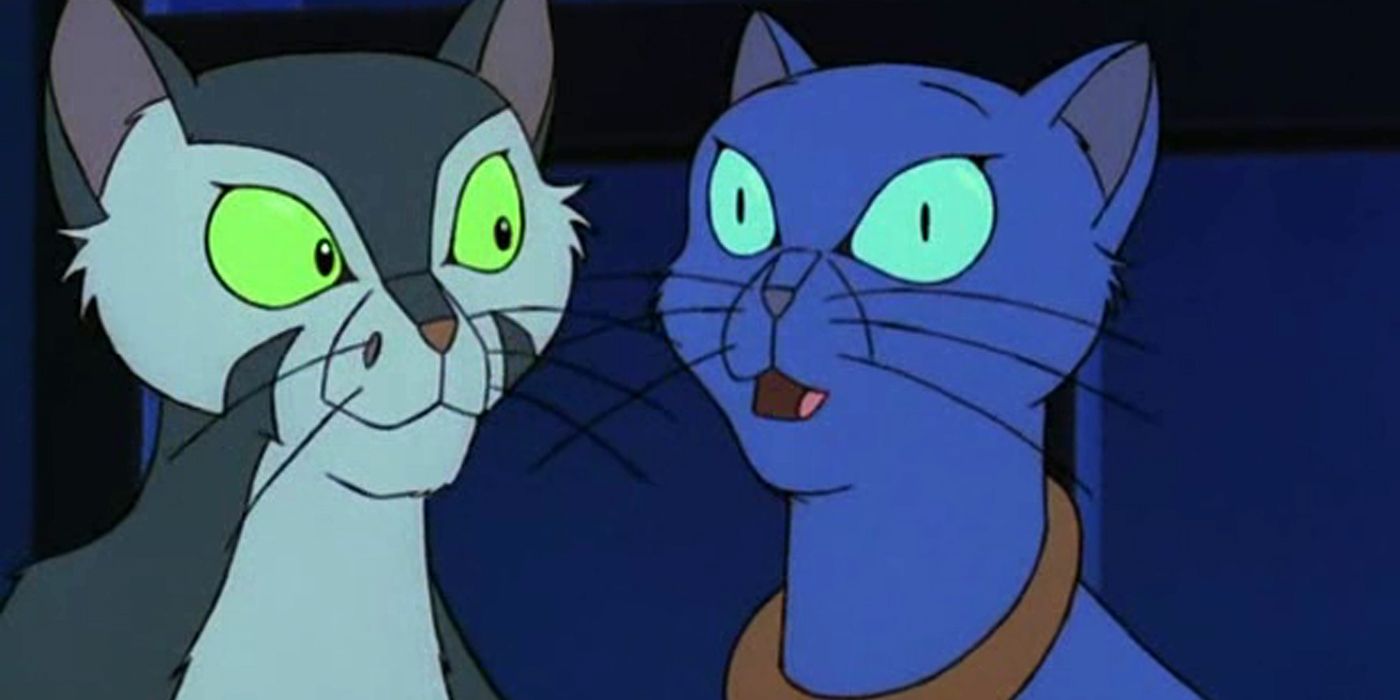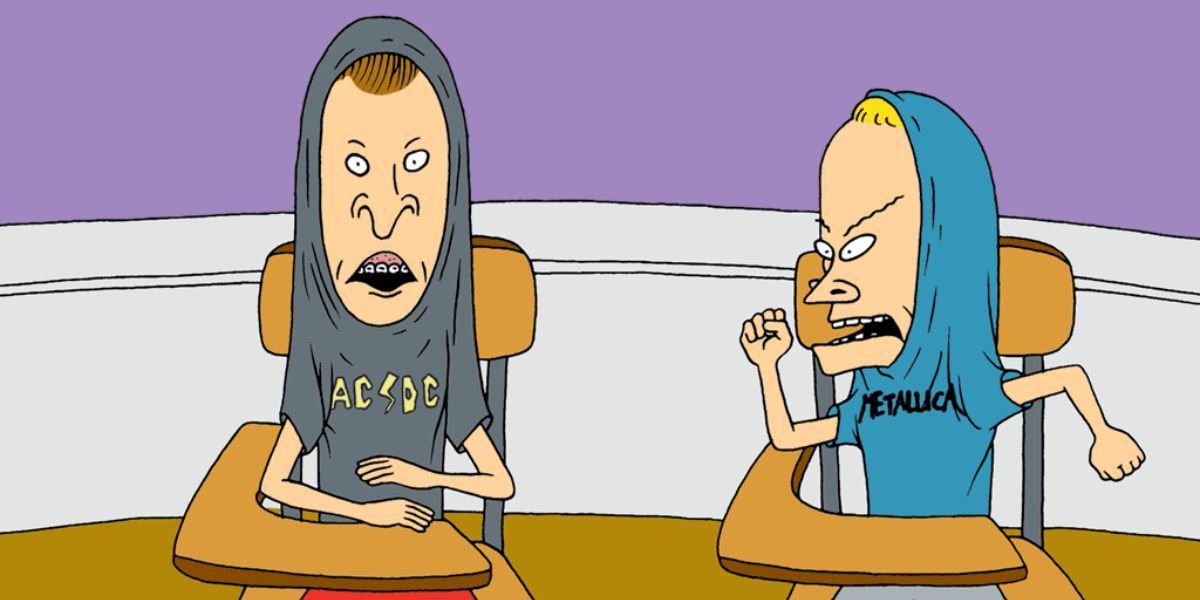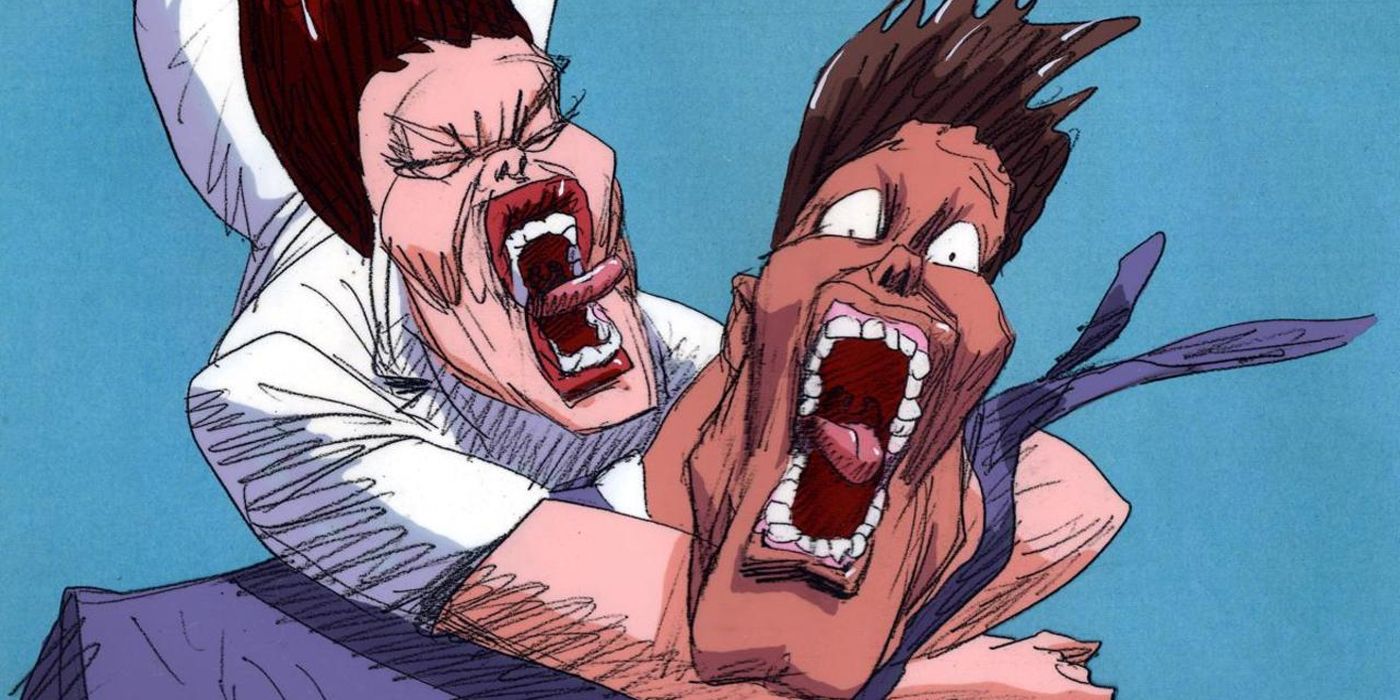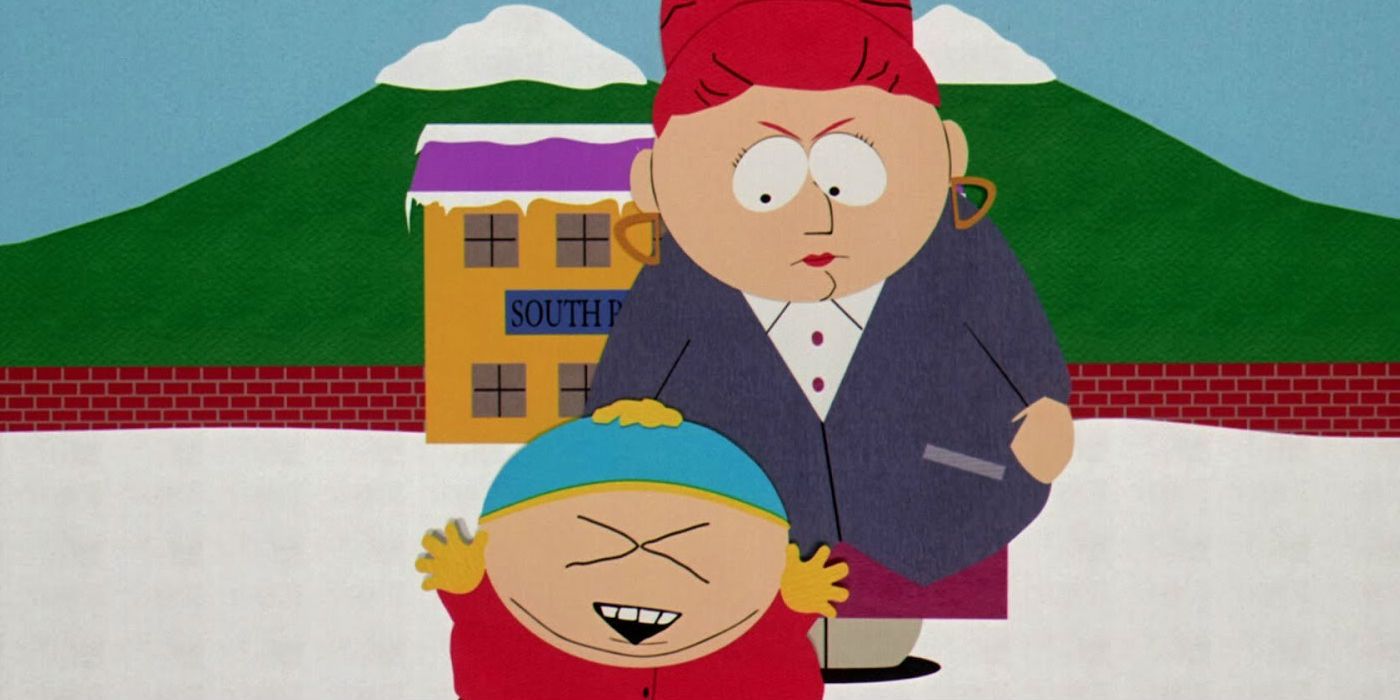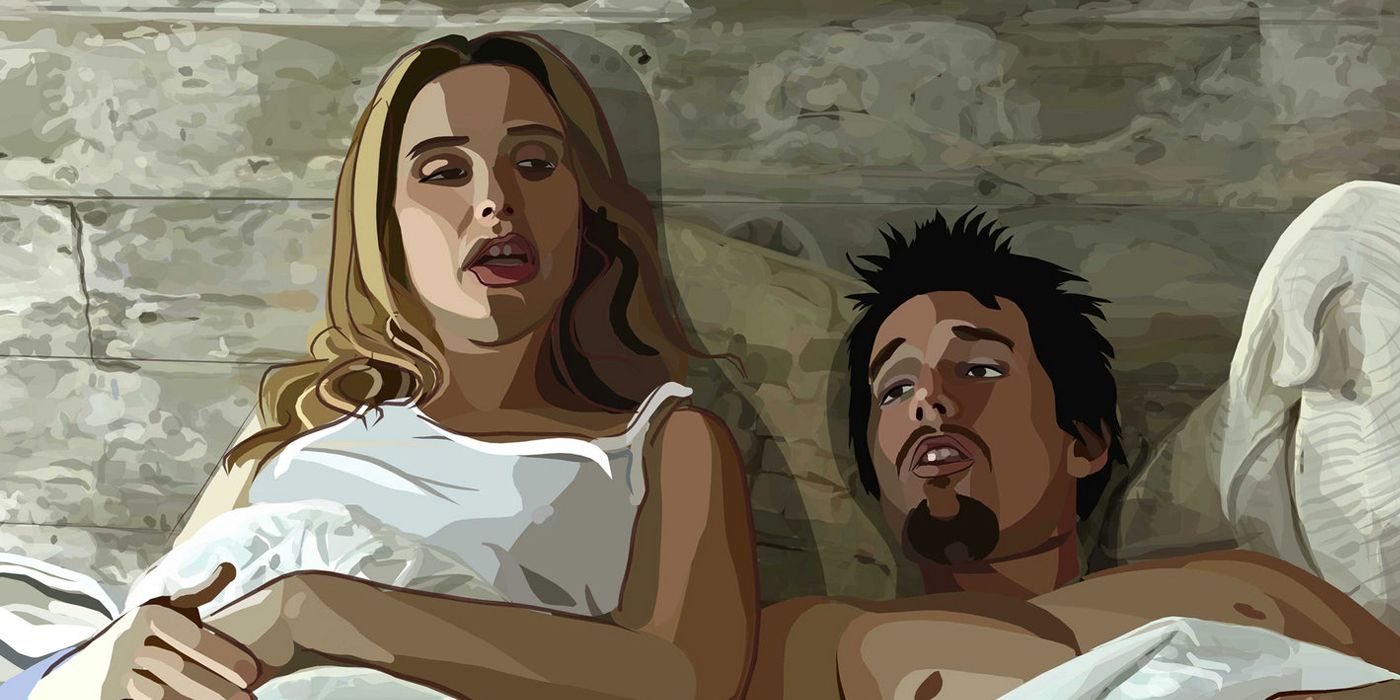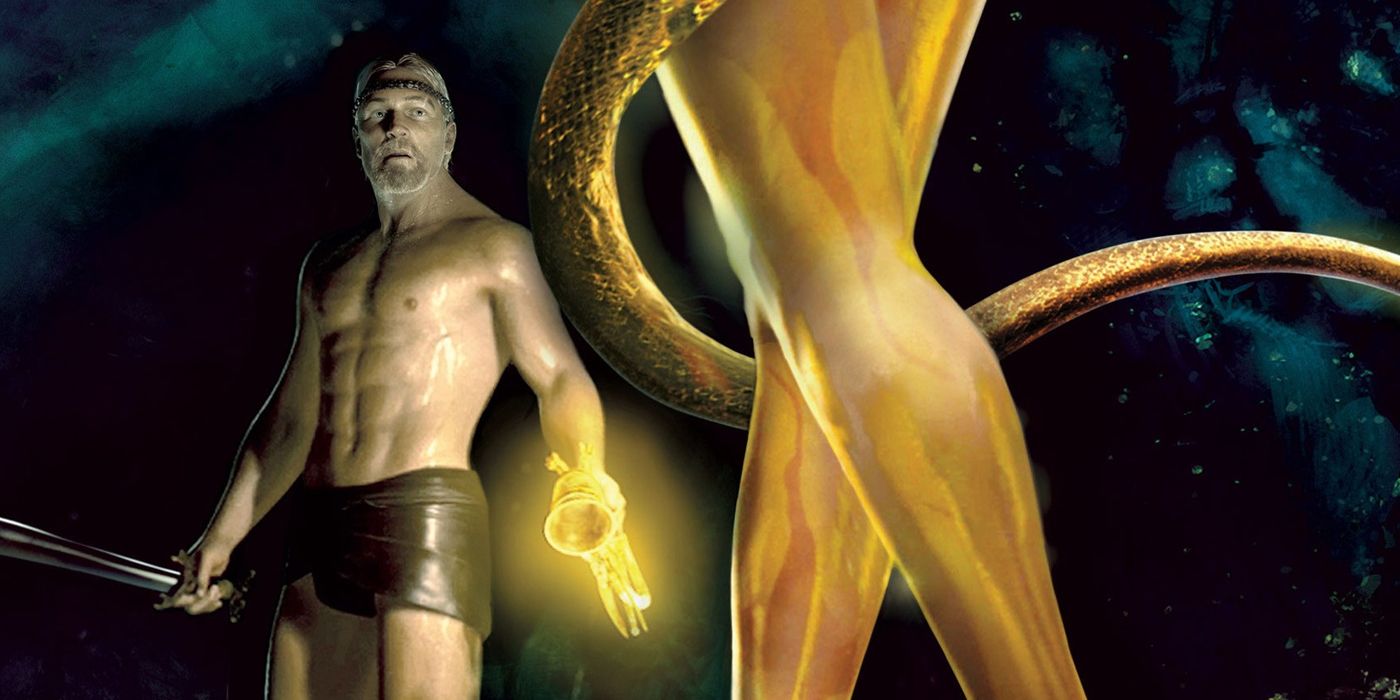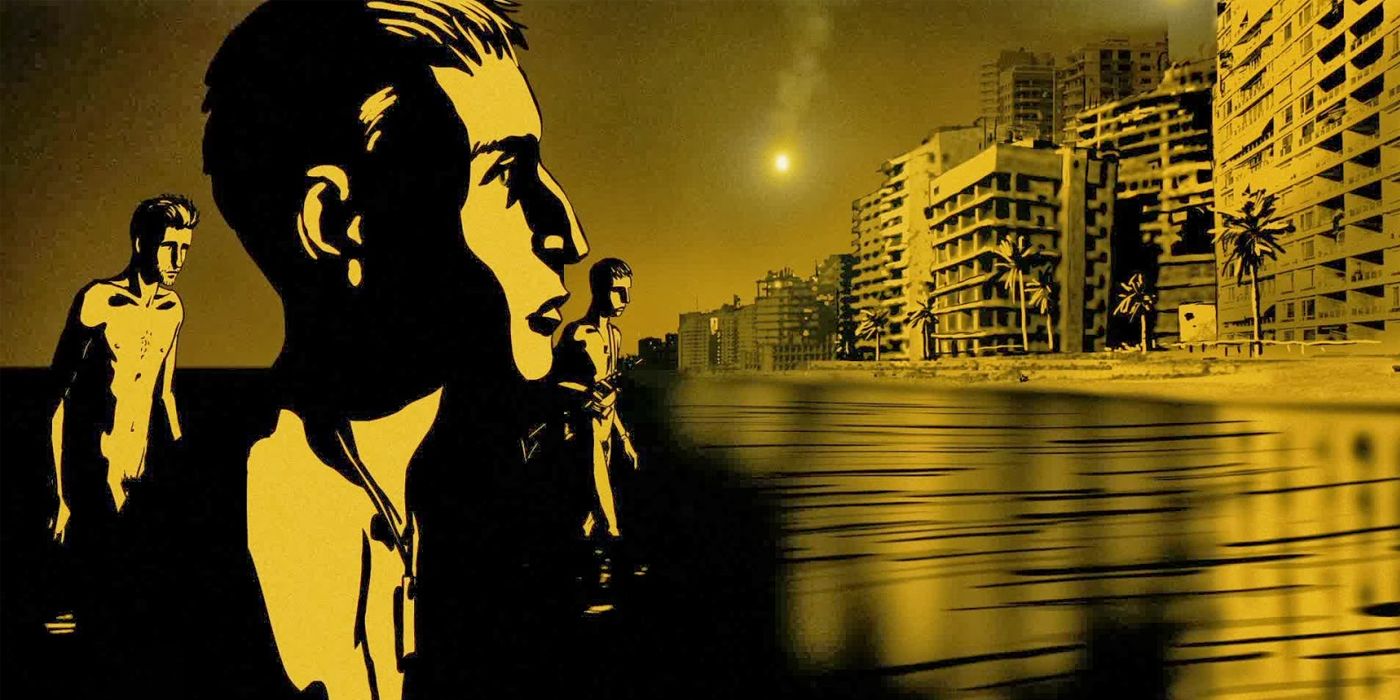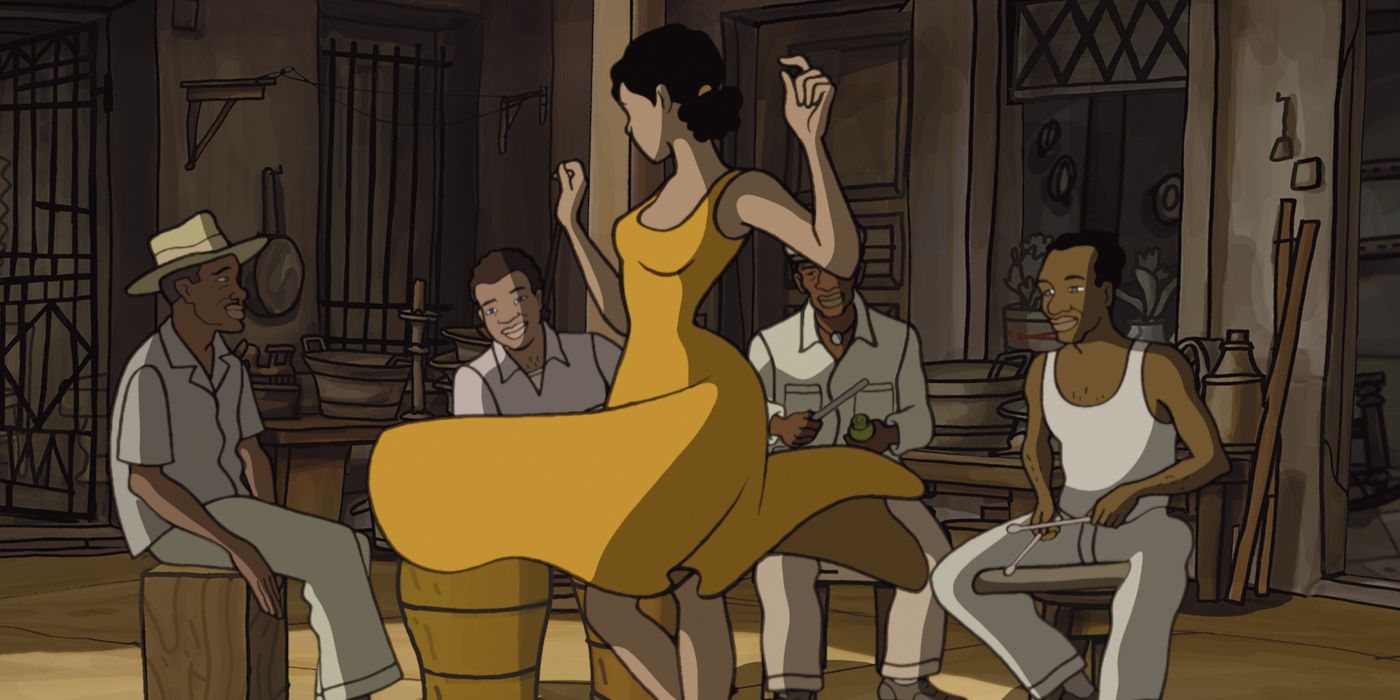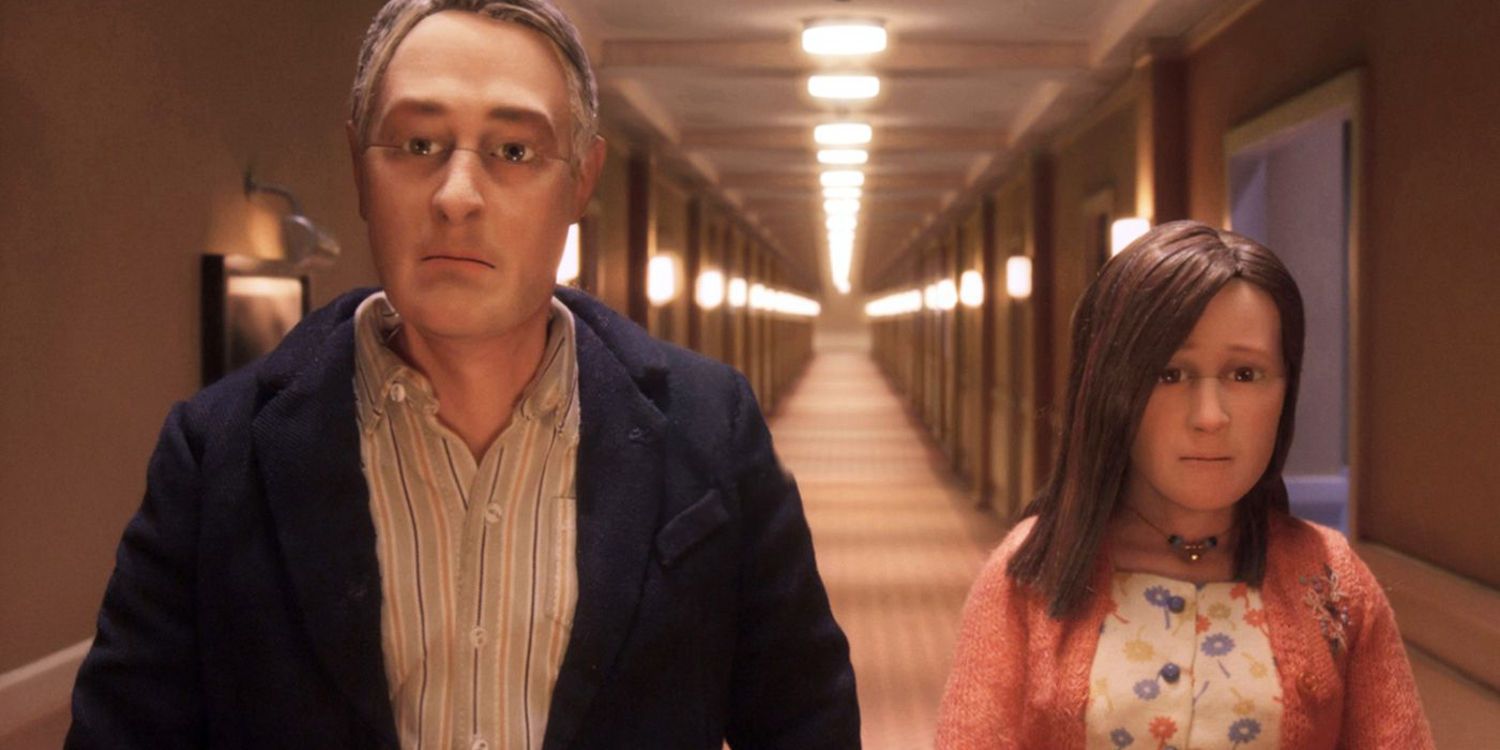Animation is typically thought of as a genre for children and families - there's no getting around that. The earliest animated shorts produced in the West were inspired largely by comic strips, and grew more sophisticated via theatrical forms like puppetry and pantomime - forms that have long traditions for all audiences in some societies (Japan, for example), but were similarly thought of as the province of children in Europe and the U.S. Even before the omnipresence of Walt Disney solidified the idea that animation was for kids, "adult cartoons" were a fundamentally niche concept.
Not that filmmakers didn't try to make it otherwise: Warner Bros' Looney Tunes team famously peppered their ostensibly youth-oriented talking-animal shorts with a sarcastic sensibility and pop-culture references meant to hold an adult attention-span, and no less than Walt Disney himself envisioned 1940's Fantasia (which paired abstract and expressionistic animated sequences with classical music conducted by Leopold Stokowski) as a bid for establishing animation's capability for more sophisticated subject matter. Unfortunately for Walt, mainstream audiences largely shrugged the film off until its popularity was revived in the '70s, largely as a "trip" experience for psychedelic drug users.
Adult animation has thrived on television (especially in the decades following the unprecedented success of The Simpsons), and delivering animation peppered with a greater degree of sex, violence or mature themes has proven a reliable way for animation producers outside Hollywood and/or the U.S. to distinguish themselves. Such features still make up a minority of overall animation production, however. Even in Japan, thought of as a mecca for the form by outside audiences, the number of features aimed explicitly at adults (as opposed to features aimed at older children and teens whose level of violence reads as "adult" to westerners) is comparatively small - and drops even further if one removes outright pornography from the equation.
Still, the cause of adult animation soldiers on; and last weekend got a serious shot in the arm with the successful release of Seth Rogen and Evan Goldberg's Sausage Party, a raucous and extremely R-rated comedy that adds sex, violence and old-school ethnic/political humor to the Pixar formula of anthropomorphic inanimate objects (in this case, a supermarket full of sentient groceries), along with an elaborate allegorical satire about the nature of religion - no, really.
For many (particularly audiences on the younger side of the R-rating allowance) it will be their first exposure to the idea of a cartoon not meant for kids, but it's only the most recent volley in a tradition that's prodded at mainstream animation from the sidelines (or the underground) for decades. The following retrospective isn't meant to be a definitive guide to the genre, nor some sort of comprehensive final word on the subject. Here, rather, is a breakdown of key films and film-history "moments" to illustrate the journey that adult animation has taken from the cutting-room floor of Hays Code censors to a moment where a foul-mouthed talking hotdog with an existential crisis can sit at the top of the Hollywood box office.
EARLY DAYS
While plenty of early animation experiments (particularly in the silent era) skirted the line of child/adult appeal, most (as mentioned previously) were indeed aimed at youth and family audiences; with most of the notable exceptions taking the form of short satirical pieces trading on the fact of the medium's kiddie-centric focus or pornographic slapstick created for private audiences. The most famous of these to have survived is 1929's Eveready Harton in Buried Treasure, which depicts the title character (an amiable gentleman possessing an enormous prehensile penis) going to increasingly absurd lengths to satisfy his need for orgasm, and is believed to have been created for presentation at a birthday party for animation pioneer Windsor McKay.
However, some mainstream cartoons ostensibly aimed at the family set prominently featured jokes and storylines aimed mainly at mom and dad; most famously the adventures of Betty Boop. The squeaky-voiced black and white bombshell frequently appeared in "suggestive" situations and various states of near-nude undress in her earliest films, and was later made to cover-up and engage in more general comic scenarios when the Hays Code censorship regime took hold in the late 1930s. Apocryphally, this is also said to have cost Betty the character of her boyfriend, Bimbo the Dog (Betty herself had originally been drawn as a dog-like creature), over concerns about implications of bestiality.
SENYA ICHIYA MONOGATARI (1969)
Comic books or "Manga" aimed at an adult readership had existed in Japan since the early 1950s (with some placing the date even earlier than that), but it wasn't until 1969 that legendary industry figures Eiichi Yamamoto and Osamu Tezuka teamed to create the first explicitly adult-oriented anime feature film; a loose adaptation of One Thousand And One Arabian Nights that combines several of the well-known short stories attributed to Scherezade into a single narrative about a humble thief named Aladdin who travels the world in pursuit of romance with a rescued slave girl, and ultimately ends up playing the role of mad king in a variation on the Biblical story of The Tower of Babel. In many respects a standard Arabian Nights reworking, the film earns it's "adult" signification chiefly through frank depictions of nudity and sex between Aladdin and his various romantic conquests. A massive hit in Japan, it earned an unsuccessful U.S. release in an English-dubbed version that is today considered a rare find (and has never been released to home video.)
FRITZ THE CAT (1969)
The enfant terrible of Western animation, Ralph Bakshi left a lucrative career producing traditional cartoons and educational short subjects to forge his own path making animated features that not only targeted adults with sexuality and graphic language, but also explored the social and political landscape of the day that "normal" animation only hinted at. Based on the underground comic series by R. Crumb (who detested the film and killed the character off as a result), Fritz became a box office hit by shocking audiences with "cute" cartoon animals engaging in sex, drugs and violence in a gritty urban landscape (earning a headline-grabbing "X" rating in the process). What sticks out today is the pointed political satire and prophetically apocalyptic depiction of the collapse of the "love generation" into anarchic nihilism in the decade to come. The film made Bakshi's career and inspired an in-name-only sequel and imitators like Down & Dirty Duck in subsequent years, and remained the go-to reference for "adult cartoons" for decades after.
FANTASTIC PLANET (1973)
A sci-fi curiosity from animator Rene Laloux, the Franco-Czech-produced La Planète Sauvage utilized the 2D stop-motion cut-out animation technique (think Terry Gilliam's interstitial shorts from Monty Python's Flying Circus) to imagine a bizarre alien world where the humanlike Om peoples are oppressed and enslaved by the giant-sized blue-skinned Draags. This order is thrown into war and chaos when an escaped "pet" Om who has been able to secretly absorb Draag educational material imparts knowledge of technology and literacy to his people, leading to an uprising wherein the Oms scheme to travel to the titular intergalactic "hub" world and destroy the Draags' ability to communicate with other civilizations. Laloux would later return with the similarly-themed animated sci-fi epics Time Masters and Gandahar, both of which have been notoriously rare presences among animation fans in the U.S.
COONSKIN (1975)
Ralph Bakshi made an impressive number of films in the aftermath of Fritz The Cat, but few are as infamous (or influential) as Coonskin. Combining live-action and animation to almost surrealistic effect, the film (originally titled Harlem Nights) was a satire of Hollywood racial stereotypes built around an urbanized parody of the Uncle Remus stories and Disney's version of the same, Song of The South. The film depicts the exploits of Brother Bear, Brother Rabbit and Preacher Fox as they leave their Southern home for New York's Harlem district - where they plan to take over (and "clean-up") the area's organized-crime operations.
Bakshi made a point of hiring several black animators (and graffiti pop-artists) to create the film and lend an authentic voice, along with a vocal cast that included Barry White, Scatman Crothers and actor/playwright Charles Gordone. Nonetheless, the film's satirical use of "blackface" character designs and other stereotypes was taken literally by Congress of Racial Equality civil rights group - who accused the film of racism and severely blunted its initial release (though later reappraisals have framed it as one of Bakshi's best works).
TARZOON: SHAME OF THE JUNGLE (1975)
Troublemaking Belgian cartoonist Picha made his biggest international splash with this sexy slapstick send-up of the Tarzan mythos, which features the title character on a jungle-spanning quest to rescue his mate June from the evil Queen Bazonga and her army of walking penis-soldiers. A global hit thanks largely to it's bawdy comic sensibilities, the film earned a U.S. release (retitled "Shame of The Jungle") with a celebrity English voiceover dub including Bill and Brian Doyle-Murray, John Belushi, Christopher Guest and Johnny Weismuller Jr. (whose father most famously played the "real" cinematic Tarzan) as the title character. Picha would go on to release several more adult animated comedies, including The Big Bang, The Missing Link (aka B.C. Rock) and Snow White: The Sequel.
HEAVY METAL (1981)
Ivan Reitman, Gerald Potterton and Robert Blaser teamed up to bring this Canadian-American co-production to the screen; ultimately creating one of the biggest animated cult-hits of all time. An anthology feature inspired by the seminal French science-fiction magazine of the same name, Heavy Metal was short on coherency (a total of nine short-stories are loosely unified by a sinister ball of light that functions as narrator in a bizarre framing story) but big on style and boundary-pushing violence and sexuality that raised eyebrows in 1981. The film was also celebrated for its wall-to-wall rock soundtrack, the complicated musical rights to which kept the film out of circulation for years - helping to solidify its cult-classic status with a generation of animation fans who knew it mainly by reputation or via a succession of sought-after bootlegs.
FIRE & ICE (1983)
Ralph Bakshi came swooping back into theaters with this brawny swords 'n' sorcery adventure inspired by the work of fantasy artist (and co-producer) Frank Frazetta. A barbarian epic in the Conan mold, the story follows prehistoric tribesman Larn as he teams with the axe-wielding warrior Darkwolf to rescue Princess Teegra of Firekeep from the ice-wizard Nekron - whose magic threatens to spread a glacial drift across the entire planet. Mainly a showcase for Bakshi's meticulous rotoscope animation technique, wherein footage of live actors is hand-traced to create the animated characters, the film remains a singularly beautiful visual experience that has inspired generations of animation fans and is considered by many to be Bakshi's greatest post-Fritz achievement; though it's notably more tame (particularly in terms of sexuality) than many of his prior offerings. A remake produced by Robert Rodriguez has been hovering in vague pre-production for several years now.
WHEN THE WIND BLOWS (1986)
Most noteworthy moments in the history of adult animation are distinguished from "kiddie fare" by the presence of extreme sex and violence, but When The Wind Blows is notorious mainly as one of the most relentlessly depressing films ever made - animated or otherwise. Directed by Jimmy Murakami (later of the Murakami-Wolf production studio) and based on the book by Raymond Briggs, it's a Cold War anti-nuclear fable depicting the final days of an elderly Sussex couple as they gradually succumb to radiation poisoning in the aftermath of a devastating nuclear war. It's as grim as it sounds, rendered even moreso for audiences who recognize the animation style from Murakami and Briggs' more well known family-friendly feature The Snowman, and is often compared to the famously heartbreaking anime feature Grave of The Fireflies.
GLOBAL ANIME EXPLOSION
The actual presence of "adult" animation in Japanese popular culture is often overstated by Western anime fans, but none the less its true that the history of the subgenre could fill an entire separate list on its own. However, the medium didn't begin to impact the rest of the animation industry on a global scale until an aggressive push into Western markets in the early to mid 1980s; fueled by the ubiquity of series like Voltron on kids' TV and the growing popularity of more violent/sexually-charged fare like Fist of The North Star and Vampire Hunter D on the comic shop and underground-video circuit.
Anime's reputation as the go-to spot of those seeking cartoons with an R-rated edge was cemented in the mainstream by the surprise success of 1988's Akira with U.S. audiences (and critics), but was also stymied early on by many Western video stores mistakenly ordering anime features from the pornographic "hentai" genre and stocking them with other conventional animated fare; earning anime a negative reputation with many retailers and so-called "watchdog" groups.
FELIDAE (1994)
Hailing from Germany, Michael Schaak's animated adaptation of Akif Pirinçci's book of the same name is a one-of-a-kind oddball feature that tells a sci-fi-tinged noir detective story set in the world of house cats. Newly moved into a new apartment house with his owner, inquisitive yet cynical Francis begins investigating the mysterious goings-on centered on the floor above them; only to be gradually drawn into a dark mystery involving animal experimentation, unexplained cat-murders and a feline suicide cult tied to a scheme to an apocalyptic genetic-engineering plot and a "martyred" former laboratory test animal. The most expensively-produced animated film in Germany to date, the film has achieved cult stature in the U.S. in part due to an almost non-existent presence on home video and DVD. Be warned: Despite looking outwardly like a conventional cartoon animal film, Felidae earns its adults only stripes through nightmare imagery and shockingly brutal violence.
BEAVIS & BUTTHEAD DO AMERICA (1996)
Mike Judge has carved out a nice niche for himself as one of the preeminent voices of middle-American satirical angst thanks to his long-running prime time series King of The Hill and his cult hit futuristic comedy Idiocracy, but the onetime co-founder of the infamous "Spike & Mike" animation festival made his first and perhaps still biggest mark on the popular culture with his MTV series Beavis & Butthead. "Do America" takes the titular duo out of their blighted Highland USA comfort zone for your basic road comedy, but Judge's unflinching insight into the lives of directionless teenage nitwits remains as cutting and unromantic as ever - a "lost generation" snapshot of the MTV-era's own self-acknowledged dark side depicting a pair of young men whose lives would probably be tragic if they weren't too oblivious to do anything but laugh about it.
I MARRIED A STRANGE PERSON! (1997)
Bill Plympton and his instantly-recognizable animation style are both best known via an impressive series of cartoon short subjects, but he's also mustered together several full features expanding on the same dark philosophical themes and lowbrow comic sensibilities, with I Married a Strange Person! as the most well-known of the bunch. A comedic riff on psychic-powers stories like Scanners, the story follows a square-jawed everyman whose recent marriage is complicated by his development of a neck bump that gives him reality-warping telekinetic powers. These powers bring him to the attention of the militarized conglomerate Smilecorp, which wants to harness his abilities for its own nefarious ends and targets his wife in order to assure compliance. It's all an excuse for Plympton to indulge his love of body-reshaping animated effects and surreal slapstick sequences, and serves as an impressive summary of his work to that point.
SOUTH PARK: BIGGER, LONGER & UNCUT (1999)
Whether you think South Park has descended into tedious self-reference or still going strong, there's no denying that Trey Parker and Matt Stone's sole theatrical outing for their foul mouthed third grade heroes holds up better than almost any other pre-9/11 geopolitical satire and still has the ability to shock today. Their secret, of course, is that underneath all the kids-behaving-badly shock value and preemptively self-flattering storyline about attempts to censor an R-rated cartoon accidentally unleashing the apocalypse is a compelling, well-paced movie that deftly parodies the "Disney Renaissance" musical formula while also delivering a genuinely great musical in its own right - heralding their later "legitimate" Broadway success with The Book of Mormon. Yes, it's amusing that the animation of the movie now looks low-tech compared to an average recent episode of the show, but Bigger, Longer & Uncut is still the real deal.
WAKING LIFE (2001)
The idea of Richard Linklater directing an animated film was a surprise in 2001, but the result was one of the low-key experimenter's most acclaimed features in Waking Life. Employing a digital version of classical rotoscoping techniques, the film follows a nameless protagonist who encounters a variety of people (played by both professional actors and relative unknowns) and philosophical discussions on the nature of dreams versus reality during a series of travels which he begins to believe are part of an intermittent lucid-dreaming experience that may hold the key to his relationship to God and the universe itself. Ethan Hawke and Julie Delpy make a brief appearance as their characters from Linklater's Before series, and Linklater was so taken with the animation technology that he decided to use it in order to bring his long-planned adaptation of Philip K. Dick's sci-fi classic A Scanner Darkly in 2006.
BEOWULF (2007)
While some of the techniques look more than a little dated today, much of modern CGI and feature animation's success with motion-capture technology owes a debt to Robert Zemeckis' uneven but pioneering work with the techniques in The Polar Express and this revisionist take on the classic epic poem of medieval monster-slaying heroism. Ray Winstone is the titular Geatish warrior, conscripted to kill the rampaging Grendel by the king of Denmark, and Crispin Glover gives one of his most bizarre performances as the monster. The film is perhaps best remembered for Angelina Jolie's eyebrow-raising turn as Grendel's frequently-unclothed, shape-shifting seductress mother. Classical Lit scholars may have scoffed at the story twists (courtesy of Neil Gaiman and Roger Avary) that added a new wrinkle to the narrative and painted Beowulf in a morally-ambiguous light, but for a moment in time there was nothing in theaters that looked or felt quite like this.
PERSEPOLIS (2007)
One of the most faithful adaptations of a graphic novel ever attempted, this French/American/Iranian co-production brought author Marjane Satrapi's autobiographical story of growing up during the Iranian Revolution to fascinating life an earned an Academy Award nomination. Beginning with the animated Marjane as a young girl supportive (along with her family) of the overthrow of The Shah, the story charts her growing disillusionment with the Revolution and struggle to maintain her own identity (both at home and while living abroad in Europe) as the new "revolutionary" government gives way to religious fundamentalism, oppression of women and silencing of political dissidents. With criticism of Revolution-era history strictly forbidden in most Iranian films, and the nuances of that same history little understood in much of the west, Persepolis remains a vital cultural document as well as a quietly powerful film.
WALTZ WITH BASHIR (2008)
"Animated documentary" sounds like something that shouldn't really be possible, and yet here one stands as a unique example of both forms. An Israeli-produced account of writer/director/star Ari Folman's experiences during the Lebanon War (specifically the Sabra and Shatila massacre), the film uses rotoscope-esque animation combined with live-action footage to create a dreamlike effect as Folman's animated self embarks on a quest to reawaken and understand repressed memories of participating in a series of brutal acts, as a none-too-subtle metaphor for how victorious nations process military actions through a revisionist prism. Unsurprisingly, the film has proved bitterly controversial, with some Israeli and Western critics accusing the film of presenting a negative image of Israeli soldiers bordering on anti-semitic caricature while multiple Arab countries (including Lebanon) have banned the film for (among other things) depicting brutality in recent historical events.
CHICO AND RITA (2010)
Romance in the absence of a fanciful or expressionistic setting isn't typically a narrative form that cries out animation, but Chico and Rita convincingly argues that it makes a natural fit. A decades-spanning tale beginning in pre-Revolutionary Cuba and eventually traveling to New York, Los Angeles, Las Vegas and Paris, the storyline follows the parallel lives of jazz musician Chico and singer Rita as their seemingly fated love is constantly interrupted and imperilled by the forces of fate and chance. Alternately comic, dramatic and heartbreaking while featuring a powerful era-encompassing musical soundtrack including Thelonious Monk, Cole Porter, Dizzy Gillespie and Freddy Cole; the film (directed by Fernando Trueba, conceptual-artist Javier Mariscal and Tono Errando) was nominated for an Oscar and earned rave reviews from international critics.
ANOMALISA (2016)
Directed by Being John Malkovich scribe Charlie Kaufman (based on his stage play of the same name) and Starburns' stop-motion specialist Duke Johnson, this downbeat drama was one of the most unique features of the early 2016 movie season. Created through detailed stop-motion puppetry, it's the story of a semi-famous customer service guru named Michael Stone afflicted with a form of the "Fregoli delusion" mental disorder (wherein one is convinced that all persons other than themselves are actually a single person in a variety of disguises) which the film visualizes by giving all characters but Michael the same face and voice-actor regardless of ethnicity, age or gender. Michael becomes elated when he finds and makes a connection with shy, insecure Lisa - who seems to be the only other person on Earth with a unique face and voice - but happiness is short-lived as he is soon overcome with a creeping new paranoia wherein he begins to perceive the truth of his own existence... as a stop-motion puppet.

